Traveling in Africa is little different in comparison with other parts of the world. In spite of this fact, Africa as a destination is becoming more and more popular. Many tourists are drawn to Tanzania thanks to its two attractions – safaris and Zanzibar island. We couldn’t resist either and visited the spice island. In the article, you will learn about our experience, but also about our accommodation tips and about what you should not miss if you travel to Tanzania.
It All Begins with Planning
When we plan our travels, we try to avoid summer months, especially because of higher prices for flight tickets (Our tips for cheap flight tickets), accommodation, and because of crowds of tourists as well. Unfortunately, this time we had to realize our journey in July, by force of circumstances. We were thinking about where to go for a long time when we finally came up with an idea to realize our longtime dream – to have a first-hand experience of an African Safari.
We did a lot of thinking about what country to visit, and we shortlisted to Kenya and Tanzania. After a long time of considering which country is the most interesting to us, we picked Tanzania. The reasons were clear. It is safer than Kenya and there is also a higher chance of seeing the Great Wildebeest Migration (which we didn’t see eventually). Also, this choice provided more possibilities to visit Zanzibar.
Undeniably, a safari was the most expensive part of our vacation. We started to search via GetYourGuide.com or Safaribooking.com which offers a wide variety. Eventually, we picked a 5-day long safari (4 nights) with a camping sleepover and a possibility to visit three national parks – Lake Manyara, the Serengeti National Park, and the Ngorongoro Crater. Our safari was arranged by African Travel Tour and we were very satisfied with their services. At first, we were little worried because they required us to pay a deposit of 200 USD. In the end, it proved that it was pointless to worry about anything because it all went without a hitch.

Meeting Africa For A First Time
When we landed in the city of Tanzania, Dar Es Salaam, there was just one task ahead of us. To get a visa and get on the plane to the Kilimanjaro airport. Surprisingly, it was harder than we expected. It was the first time we encountered the African way of thinking – “there’s plenty of time for everything.” For that, the locals use this phrase – “Hakuna Matata”. The free translation could be: Keep calm and relax, it will be done, somehow. Eventually, it took 3 hours of standing in queues and we were anxious that we wouldn’t manage to catch our next flight in time.
The flight with Fastjet, the local airlines of a doubtful reputation, was a piece of cake after the getting visas. Flights in Tanzania you can find easily at Skyscanner.com A taxi was waiting at the airport to take us to a hotel in a nearby town of Arusha. In the hotel called Arusha Center Inn Tourist, Shabani – the owner of the safari tour – was waiting for us. He told us about what was ahead of us in next 5 days, and we could finally take a shower and go to sleep. The room was very small, the bathroom was not very clean and wifi wasn’t working at all, but the bed was cozy and that was enough for us.
A Visit To Lake Manyara National Park
A taxi took us after a decent breakfast to a place where we met with our fellow-travellers. In total, there were nine of us – young people from various corners of Europe. We were divided into two off-road vehicles. Each of the cars, Toyota Land Cruisers, had a pop-up roof, so you could stand up and watch animals and take pictures. Also, there was tents and food for the whole crew in each car. Our guide was also our driver, and there was a cook in the car as well. He helped to make food and build tents for all of us.
When everything was ready, we hit the road to Lake Manyara National Park which is famous especially for a variety of water birds living there. We saw several kinds of apes, a few wildebeests, and a giraffe before we reached the lake. Around water, we watched a plenty of herons, colorful flamingos, storks, geese, and plovers. It was a wonderful experience. But at that time, we had no idea that we would come across a herd of elephants, literally blocking the road, during our way back. A majestic male elephant with huge tusks stepped in our way, unwilling to let us go. We tried to step on the gas and pass by in close proximity, but he was not very fond of it. Our experienced guide made a skillful maneuver at the end, so we managed to pass by the huge elephant but we were all excited as hell.
The Way To Serengeti, A Journey Full Of Pitfalls
The following day we loaded the car with our things and headed for our main destination – the Serengeti National Park. We were delayed on our way there by a stop in the auto service where we had the tires changed. The road was very dusty and it seemed to take ages. The more we receded from an inhabited agglomeration, the more rapidly the landscape turned wild and rough. We passed Maasai villages and men dressed in multicolored tunics as they propelled their herds to watering places during the way.
Unfortunately, the journey was not as smooth as we would like. A little stone flew to the windshield, leaving a huge crack on it. So, there was a huge “spider net” blocking our view. The next problem forced us to stop for a couple of hours. A spring rate in the other car’s front axle suspension broke. Right before the entrance to the Serengeti national park. We waited for hours in the direct sunlight, until our drivers managed to solve the problem. Meanwhile, we spent the time in the company of the Maasai who were drifting around hoping we would be interested in paying for taking pictures with them. Here you can read the article about our visit te Maasai village. It was awesome experience.
Afterward, we were in a hurry. We wanted to reach the camp by daylight because the road was bumpy and full of potholes and stones, it was really dangerous in the night. A few kilometers after crossing the borders of the national park, our car engine unfortunately overheated. The leakage of engine coolant caused by a hole in the radiator was to blame. We started to feel little desperate! But, you know, Hakuna Matata. Typical African copes with anything by himself. We couldn’t believe our eyes, but the problem was solved with loose tea. Our guides poured it into the radiator expertly, in order to plug the hole with larger pieces of tea. And it actually worked.
We eventually reached the camp in darkness. The cook built the tents for us and cooked us dinner which was, after the day-long plod, delicious, indeed. The camp in Serengeti surprised us. There was a small kitchen in the middle, build out of bricks and with iron bars instead of windows. Nearby, there was a humble social facility with cold water. But there was no fencing around the camp. We were told that whenever we would go to the bathroom, we should beware of lions or buffalos. The kitchen was attracting many other animals of smaller size, such as monkeys, birds, and rodents. A few meters from our tent, there were burrows inhabited by mongooses which were running around calmly, eating the leftovers.
 The first night in Serengeti was really adventurous. It was around 4 a.m. when we were woken up by a number of merciless bangs. We ran out of the tent, narrowing our eyes to see what was going on. A male elephant smelled fresh fruit stored in the kitchen. The only things blocking his way were the bars, so he decided he would remove them with his tusks. It took him a few punches only to damage the bars enough to be able to conquer the kitchen with his trunk. It woke up the cooks sleeping on the kitchen floor. One of them ran out of the kitchen with a box of fruits, trying to lure the elephant away from the camp. The other ran to the car, turned on the lights and started revving it up. At that point, the whole kemp was awake. Fortunately, the elephant got scared and ran away. But he didn’t bother to clean up the mess.
The first night in Serengeti was really adventurous. It was around 4 a.m. when we were woken up by a number of merciless bangs. We ran out of the tent, narrowing our eyes to see what was going on. A male elephant smelled fresh fruit stored in the kitchen. The only things blocking his way were the bars, so he decided he would remove them with his tusks. It took him a few punches only to damage the bars enough to be able to conquer the kitchen with his trunk. It woke up the cooks sleeping on the kitchen floor. One of them ran out of the kitchen with a box of fruits, trying to lure the elephant away from the camp. The other ran to the car, turned on the lights and started revving it up. At that point, the whole kemp was awake. Fortunately, the elephant got scared and ran away. But he didn’t bother to clean up the mess.Serengeti – The Real Gem Of Africa
The main destination of many tourists on a safari is to see the Big Five game – Cape Buffalo, African leopard, African lion, African elephant, and rhinoceros (the common hippopotamus is sometimes included). The Big Five is a term coined in the colonial era and still in use today. It denotes the five most dangerous or the most difficult animals to hunt. We managed to see all of them, except for the extremely endangered rhino. It is on the brink of extermination, because of the Chinese medicine especially. There is a few of them living in the national parks and they are strictly guarded against poachers. Anyway, the future of the rhinos is still strongly threatened.
During those few days, we spent in the Serengeti National Park, our love for nature and living creatures deepened. It was amazing to watch animals in their natural habitat and to listen to our guide’s stories, who told us about a lifestyle of giraffes, lions, elephants, zebras, and wildebeests. We thought that tracing animals for the whole day would become boring after a while, but the opposite was true. Serengeti gave us a few experiences that we won’t forget.
The Ngorongoro Crater
When we left the Serengeti plains, one last day to be spent in the Ngorongoro crater was ahead of us. Our goal was a tough one. We hoped we could finally see the rhinos there.
The Ngorongoro crater is a caldera left after a large prehistoric volcano. It means that millions of years ago, a huge volcano collapsed into itself and all that was left is an enormous crater expanding up to 260 square kilometers. The edges lie around 2,400 meters above sea level and the bottom itself lies at the height of 1,800 meters above sea level. Nowadays, the crater is sometimes called as the biggest ZOO, because there are many kinds of animals living in its bottom except for one – the giraffe. The crater walls are so steep that the animal would not be able to climb down.
We spent the last night in a camp on the edge of the crater and there was a breathtaking view of the surroundings. On the other hand it was also very cold there. The temperature dropped to 5° C in the morning, and it was incredibly foggy there, so we couldn’t see almost anything. When we were approaching the bottom, the temperature started to rise and the fog disappearing. We didn’t see any rhinoceros that day. The reason being, reportedly, that it was too cold for them, so they rather stayed hidden in the bushes. We were already saying goodbye to African animals and hit the road back to Arusha. During our way, there was a short visit in a Maasai village where they welcomed us with their traditional dance, showed us their culture and village. Here is an article about the Maasai and our visit to their village.
A Journey To Zanzibar
After the return to Arusha, we were accommodated in the Raha Leo Inn hotel. It was a nice hotel with spacious rooms and a lounge, we can only recommend it.
The journey to Zanzibar was ahead of us. We planned to travel to Dar Es Salaam by bus at first and to continue with a ferryboat to Stone Town from there. We decided to buy flight tickets to Stone Town because of the lack of time, it was quite expensive, of course. Those tickets were the most expensive we had ever bought, considering the length of the flight. The direct flight from the Arusha Airport to Zanzibar took approximately 80 minutes, and it cost 220 USD per person. Here is our Travel guide to Zanzibar.
Liked this post? PIN IT FOR LATER!!
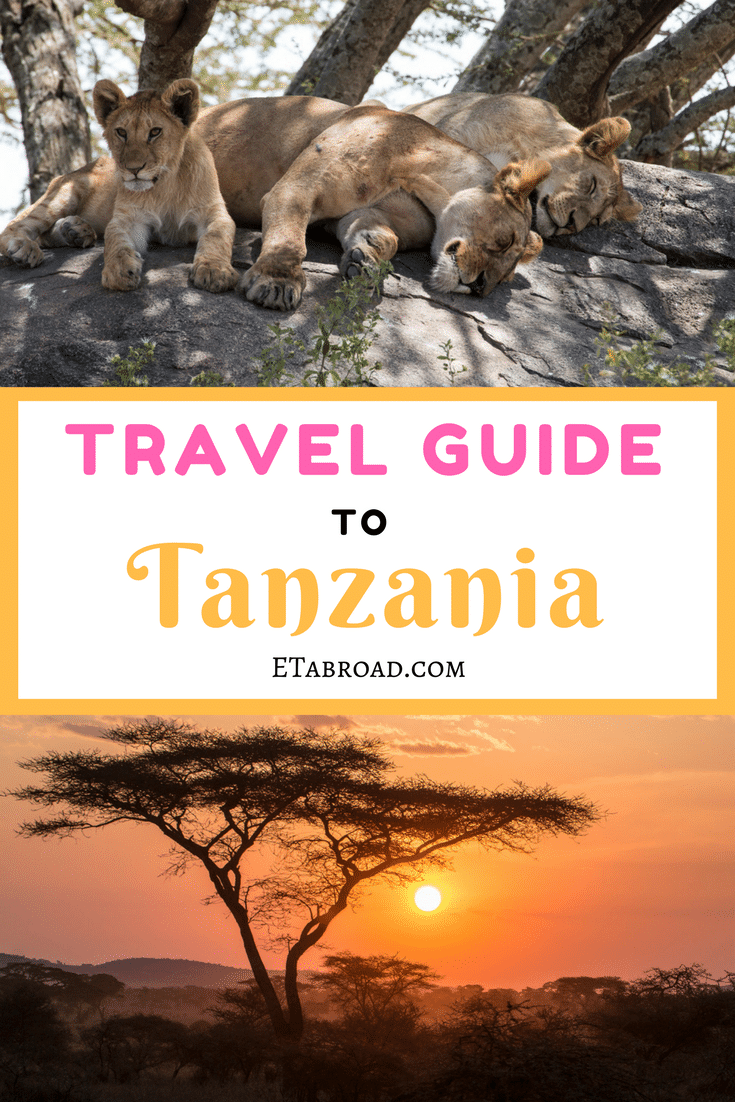



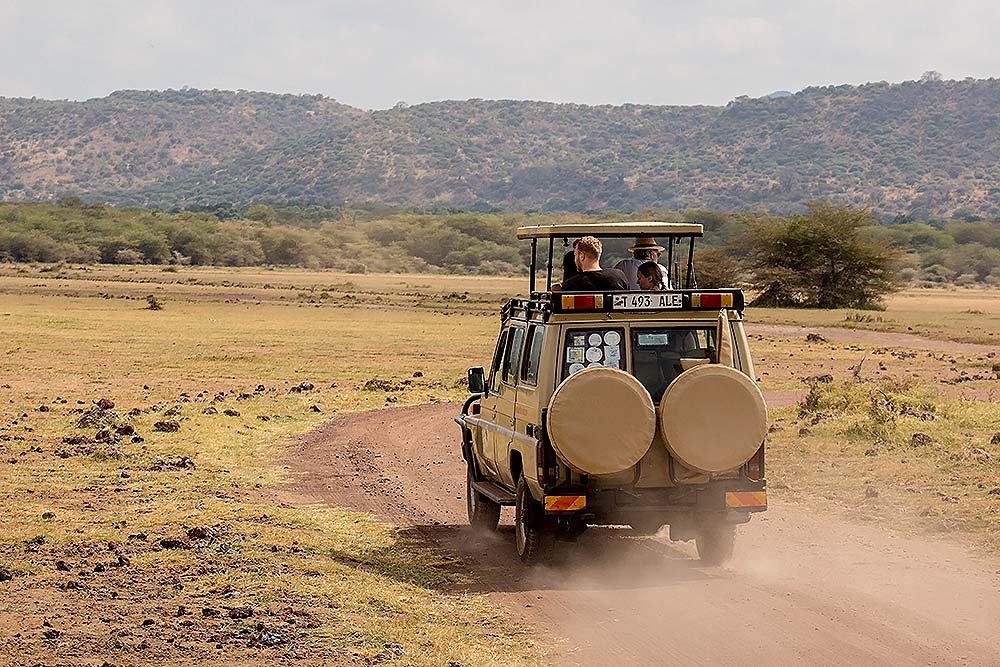
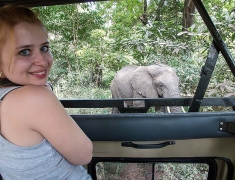
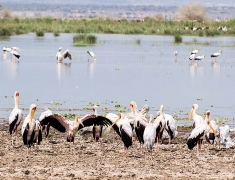


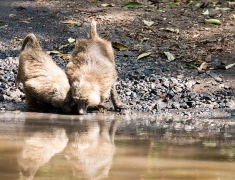
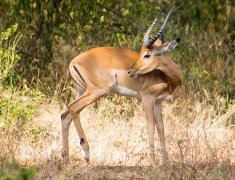
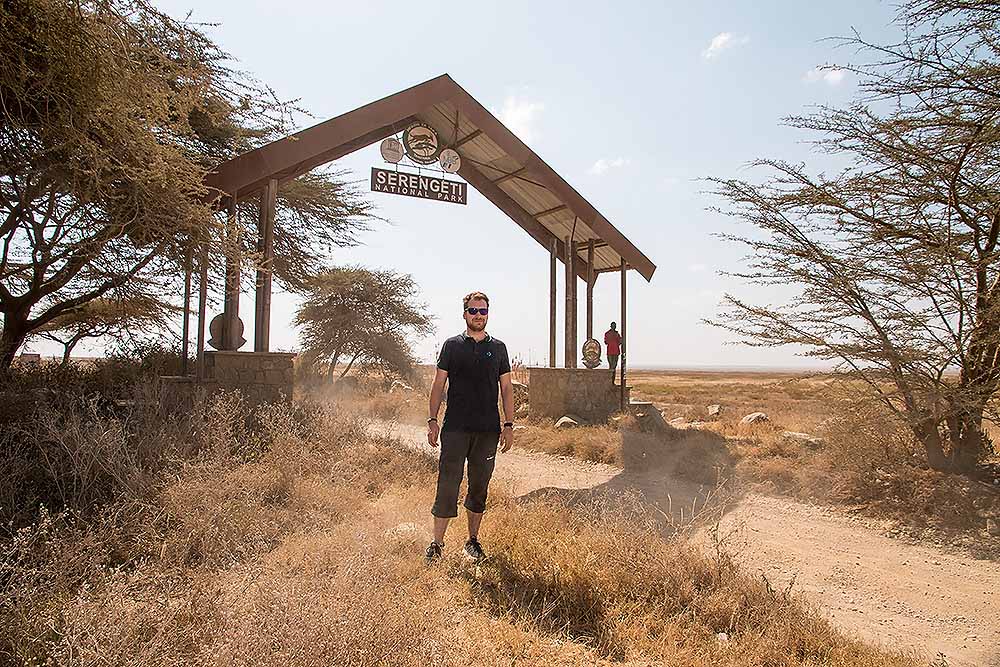
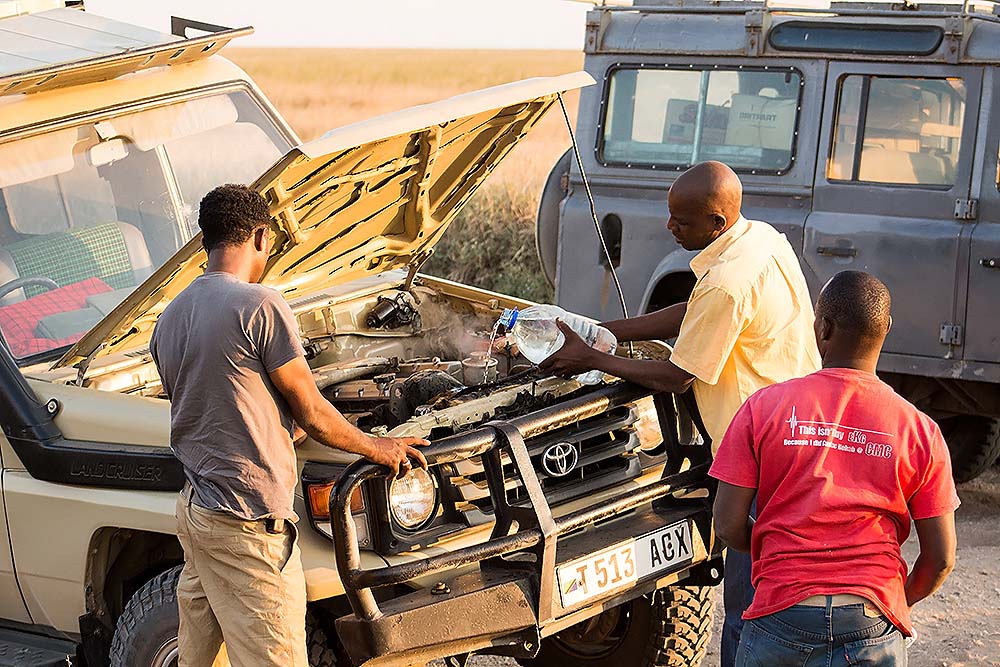
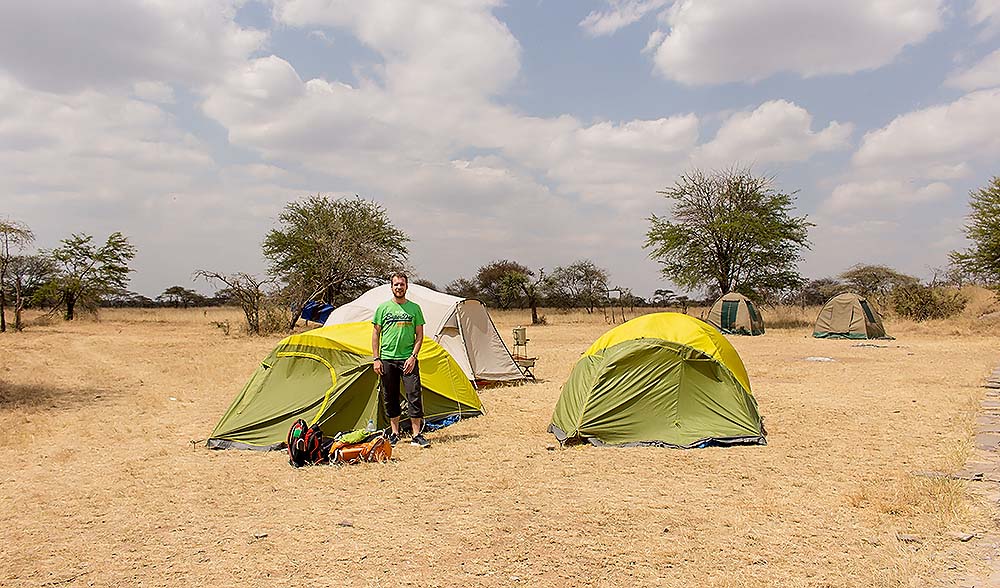
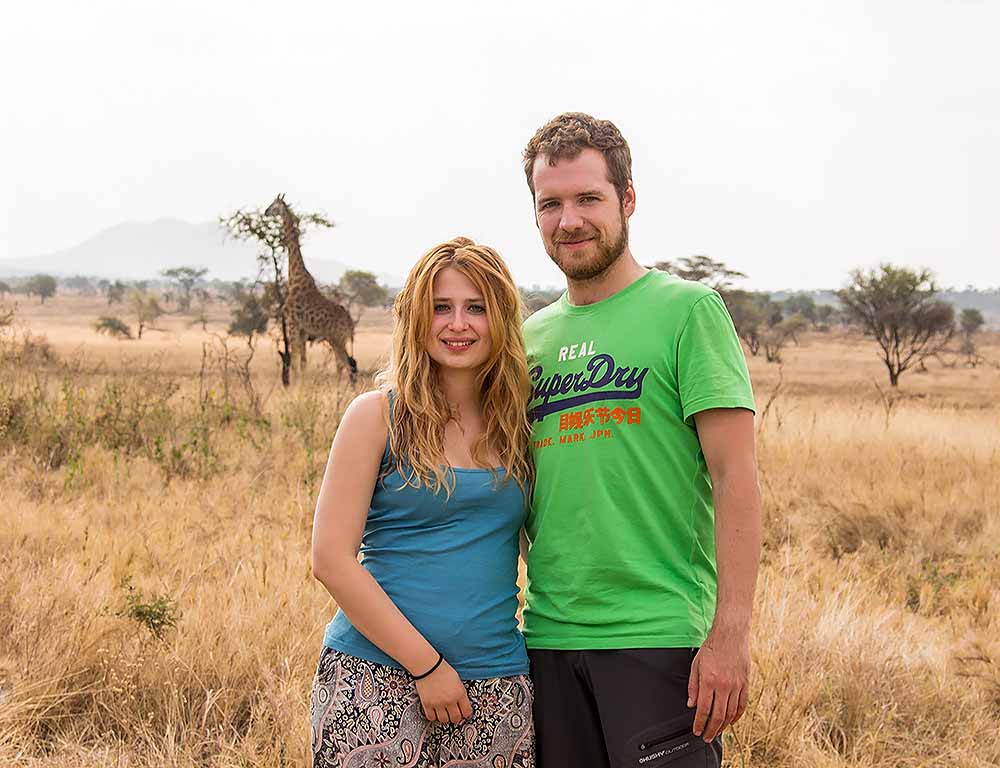
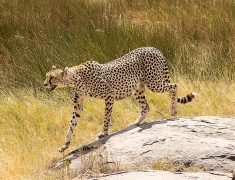

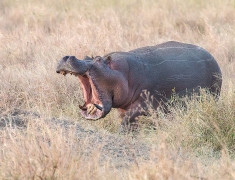
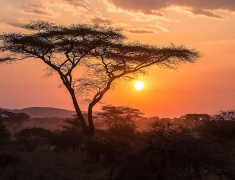
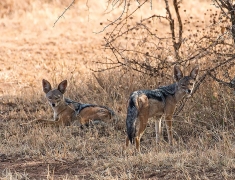
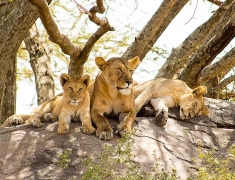
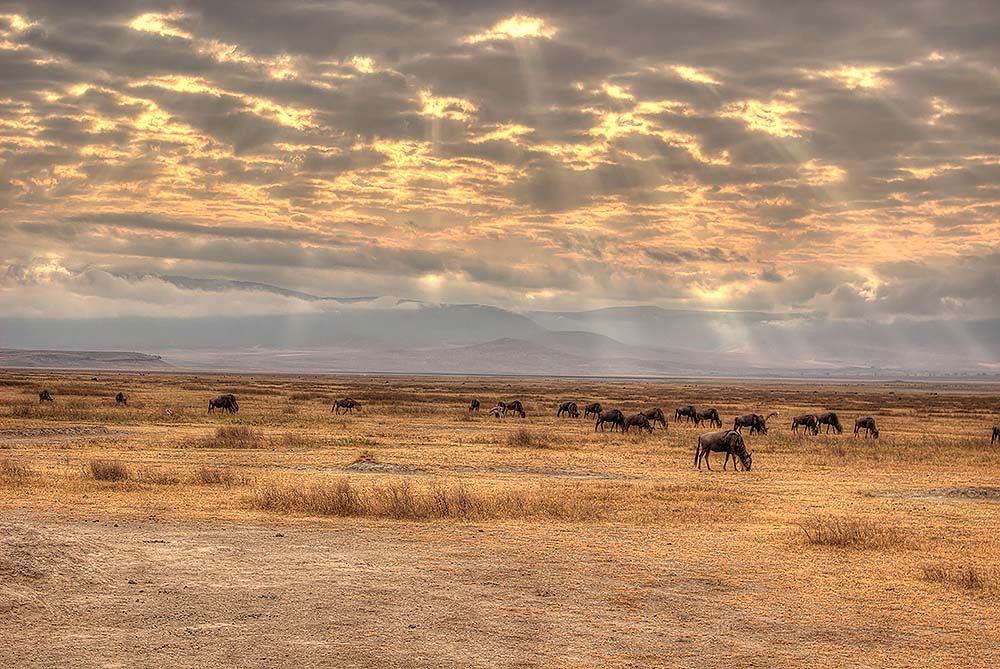
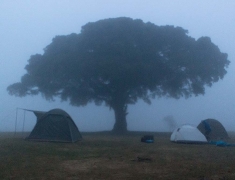
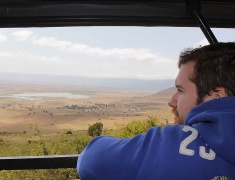
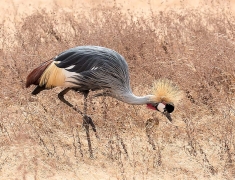
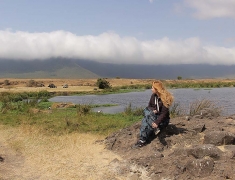


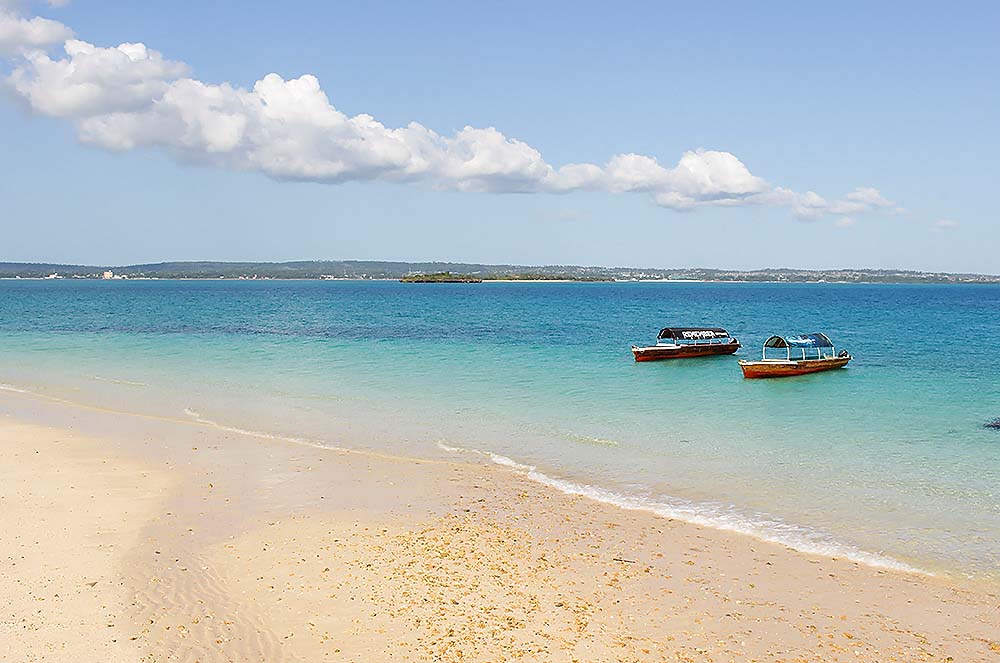
Wow you really did need the Hakuna Matata attitude on this trip. But the hurdles along the way must have been well worth it for the amazing sites you saw. It looks incredible your pictures are fantastic. I have done a safari in South Africa but would love to go to Tanzania and Zanzibar. #TheWeeklyPostcard
Yeaaaaah, the whole trip to Africa was on Hakuna Matata attitude, this was the only way. 😀 But I think we should leran sometimes to use it at home as well. South Africa sounds perfect, I heard there is higher opportunity to see the rhino there, cause we didnt have a luck to watch them.
Very detailed post and lots of useful information. Going on a safari in Africa has always been my dream. It seems you had a great trip and a lot of picture opportunities. #TheWeeklyPostcard’
Hi, thank you for your comment, yeah I would highly recommend the trip to Africa, it is really great experience of a lifetime. I hope you will have an opportunity to go there soon 🙂
Wow this is a once in a lifetime trip. I would love to do a safari like this. Your pictures sold me on it. Thanks for sharing on #TheWeeklyPostcard
We are happy we can inspire to other travelers for visiting such a beautiful country. Wish you the best on your ways !
I’ve never been to Africa, and after reading this post, Tanzania seems like a great starting point. Such beautiful photos. #theweeklypostcard
Hi, this was our first trip to africa too and I must admit, the Tanzania is perfect staring pouit. It was perfect, completely safe and people were friendly. 🙂
I loved reading about your authentic African experience. I was surprised the camp didn’t have a fence. I guess the Elephants would just knock it down but at least it might keep Lions out. We had to pay a large deposit on a Moroccan Trip into the desert which I was worried about, but like you our fears were groundless. What an exciting trip.
Yeah, we we suprised about the camp without fence and we were afraid that the elephant passes through our tent in the night. But our guide told us it is not possible, they are clever animals. Yeah it is always bit risky to pay deposit, but we have never had some bad experience in our lifes 🙂
Sounds like a great trip and some interesting antics. I like the poorly behaved elephant trying to get into the kitchen food. Hubby said they can use flax seeds to seal radiator leaks so the tea leaves would work the same.
Hi Rhonda, thank you for your post. Your husband must be handy man, because we saw something like this for the first time 😀 And you are right, the experience with elephant was the TOP enjoyment 🙂
This is exactly the trip I want to take with one exception. I would prefer to drive myself. Did you meet any other travelers driving on their own? Or is it mostly guided trips? Thanks for the inspiration; see you next week! #wkendtravelinspiration
Hi Jim, yes, I think it is possible to drive by your own, we met one car on our way. I must admit we considered this option, but if you are not experienced it is really difficult to find some animals. So you need to pay the guide in the car and he can help you to find some. It is for sure better for more than 4 people, because you can share the costs, it is more expensive option, but it is possible 🙂
Thanks for the #WeekendTravelInspiration virtual safari in Tanzania (or TZ as we call it in East Africa).Your first night in the Serengeti (the elephant encounter) must have been both scary and excititng! I have been to the Masai Mara on the Kenyan side which is an extension of the Serengeti. Ngorongoro Crater is on my bucket list.
Hi, wow I belive you have enjoyed the Masai Mara on the Kenyan as well. We hoped to watch the Great Migration, but it was not enaugh time to follow the animals, because there were already crossing the borders to the Masai Mara. Well maybe next time. And Ngorongoro crater is really amazing 🙂
Would love to go on a safari one day and see all of those beautiful animals in their natural habitat! #TheWeeklyPostcard
Hi, I hope one day you will follow your dreams 🙂
Safaris always look amazing. you have some practical tips here for planning and fitting a lot in. Southern Africa is far for us so we would really want to make the most of any visit. #wkendtravelinspiration
I think every safari is amazing experiene, no matter where you are. I hope if you decide to visit Africa for safari – our tips will be useful and helpful for you. 🙂
I must say your 5D/4N safari tour is one of the most reasonably-cost safaris I have ever read. Other posts on safari often mention how costly the tour is but then again, African safari is a once-in-a-lifetime experience 🙂 I can imagine how you guys felt when the car broke down, a crack in the windshield but I guess in retrospective, it adds to the experience 🙂 Your photos are amazing…thanks for sharing with us, it’s great post! #TheWeeklyPostcard
Yaaah, you are right, the safari tours are always very expensive, but it depends on your demands as well. I think we chose relativey the cheap tour, but I didn´t regret of anything. The truth is – in the moment when the car was broken I was a little bit nervous. But then you see other people and they are just fine. It helps me to enjoy every moment and I took it that is part of it. It is the pure Africa 🙂
Oh, I absolutely love safaris. Have been to South Africa twice now and visited Pilensberg NP and Kololo Game Reserve. Loved those. Am looking into other African destinations now, thank you for your great post!!
Oh that is amazing, you probably see a lot 🙂 If you love safaris the Serengeti is a perfect choice 🙂
What an epic adventure. I’ve seen rhinos in the wild, but to see so many of these animals would be such an exciting experience. Thanks for sharing on #theweeklypostcard
Yeah, you were lucky to see the rhinos, because they are really threatened. Of course we saw so many different animals but one day I hope we will see the real rhinos in the wilderness. 🙂
Looks like you guys had a blast. I must say an African Safari is unbeatable. Seeing those beautiful animals in the wild is absolutely one of the most enriching experiences ever!
Hi Therie, yes I must admit, It was one of the best experiences from our travelling ever ! 🙂
This is the best experience of whole life most of the families never ever forget this beautiful journey to the Africa Safari.
Hi Eric, you are right. I loved this trip. Since then I am not able to visit any ZOO anymore !
Thank you for this travel guide! I found it enjoyable to read. It definitely seemed like you had a wonderful trip to Tanzania. Have you been to other places in East Africa aside from Tanzania? Kenya, perhaps? Which one do you think it’s better? I think they both have their own unique points that draws tourists to them. And I think an experience in one place is never the same in another. There’s always new memories to make during travels! Looking forward to reading more about your travels!
Hi Ana. Thank you for nice comment! This was our first trip to Tanzania, and we havent visited any similar country yet. From African countires we have been to Egypt or Algeria, but those are Arabic countries, so it is something completely diffrent. I think each country is beautiful by own way and if you visit one country many times, every trip is different. So, I believe Kenya is also very beatiful and nice. I hope one day we will also visit other countires in East Africa.
Hi, this was our first trip to africa too and I must admit, the Tanzania is perfect staring pouit. It was perfect, completely safe and people were friendly